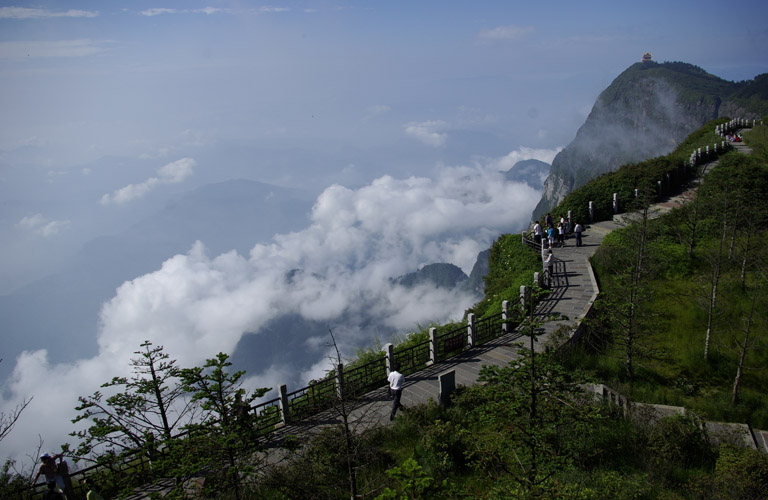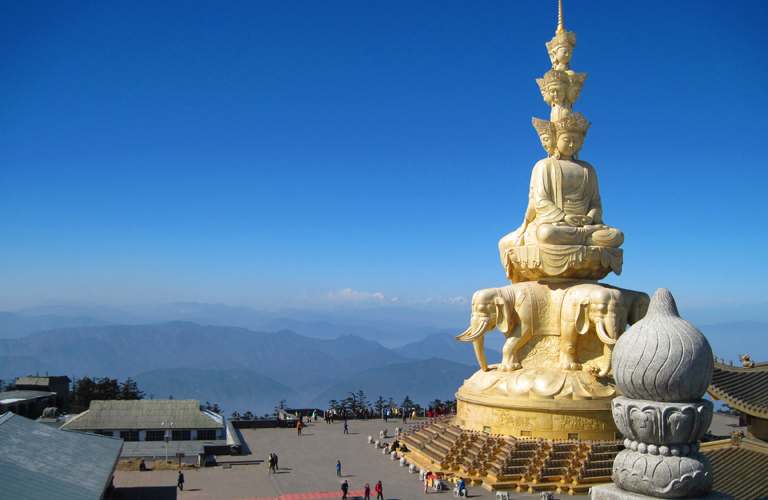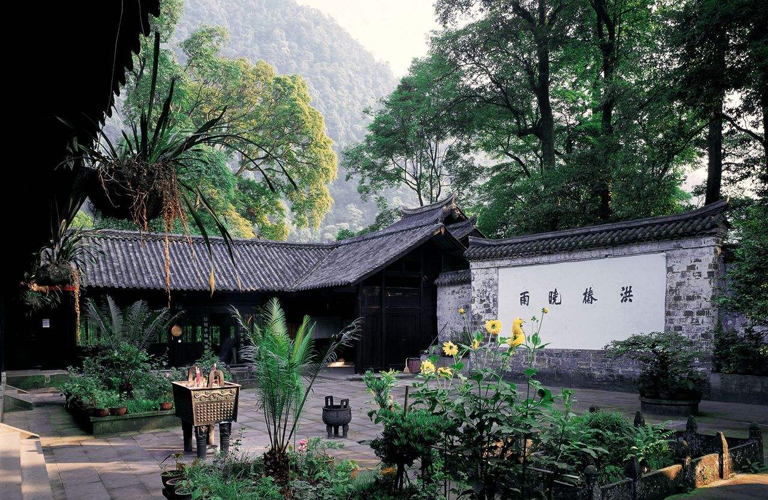Chengdu
Pandas' Hometown
Jiuzhaigou
Famous Fairyland
Leshan
Giant Buddha
Gonggashan
Best for Hiking
Daocheng Yading
Shangri La Views
Siguniangshan
Eastern Alps
Wannian Temple is located under Lion Ridge, about 15 kilometers up from Baoguo Temple at the foothill of Emei Mountain. It is one of the main temples in Mount Emei. The temple was built in the Eastern Jin Dynasty and was originally called Puxian Temple; it was rebuilt by Zen Master Huitong in the Tang Dynasty and renamed Baishui Temple; In Song Dynasty, it was renamed Baishui temple. In the 29th year of the Wanli reign of the Ming Dynasty (1601 AD), Emperor Shenzong granted the name of Shengshou Wannian temple to celebrate the 70th birthday of the his Queen Mother.

The three treasures of Wannian Temple: Buddha's Tooth, Palm Leaf Scripture and Imperial Seal. The Buddha's Tooth was given by foreign friends in Ming Dynasty. According to the identification of scientists, it is a fossil of the tooth of ancient sword tooth elephant. The Palm Leaf Sutra was presented by the king of Siam (now Thailand) in the Ming Dynasty. It was written in Sanskrit (ancient Indian) and "Fahua Sutra". The Imperial Seal was granted by Zhu Yizhen, the emperor of Ming Dynasty, when he built the Brick Hall Without Beams.
It is named as Brick Hall Without Beams because the entire hall was made of bricks, without using any beams. The hall was built in the 28th year of the Wanli reign of the Ming Dynasty (1600) to celebrate the birthday of the emperor’s mother queen.
The hall is 17.12 meters high, 15.79 meters wide and 16.06 meters deep. The top is a semicircular hollow dome, and the bottom is a square base. It looks like a yurt, symbolizing the round sky. The walls and roofs of the hall, even the lintel, arching and window lattice are all made of bricks. The hall is decorated with beautiful wooden carvings.

The four walls of the hall are surrounded by Ten Thousand Buddhas. There are twenty-four niches in the lower part of the inner wall, each of which contains iron Buddha statues; the middle and upper parts of the inner wall are built with horizontal niches and many small Buddha statues. On the top of the dome hall, there are four fairies flying in the sky, holding Pipa, Konghou, Lusheng and Flute (Chinese music instruments). They are vivid and colorful. There are five white pagodas on the four corners and the middle of the hall. The middle one is larger and the four corners are smaller. The four corners of the temple are decorated with lions, elephants, deer and other auspicious animals.
There is a bronze statue of Samantabha in the Brick Hall Without Beams. According to legend, in 980 of the Song Dynasty, local officials in Sichuan repeatedly reported to the emperor that the Bodhisattva had appeared in Mount Emei. The emperor, who believed in Buddhism, ordered officials from the Ministry of Labour to go to Chengdu to supervise the construction of bronze statues of Bodhisattvas riding six toothed white elephants. The bronze statue was cast in sections and transported to the Brick Hall Without Beams.

This bronze statue is 7.35 meters high and weighs 62.1 tons. It is a Bodhisattva sitting on a lotus throne on the back of a white elephant with six teeth, wearing a golden crown of five Buddhas and inlaid with six jewels, which is more luxurious and beautiful than ordinary Bodhisattvas.

Route: Chengdu - Leshan - Mt. Emei - Chengdu

Route: Chengdu - Mt. Emei - Chengdu

Route: Chengdu - Leshan - Emeishan - Chengdu